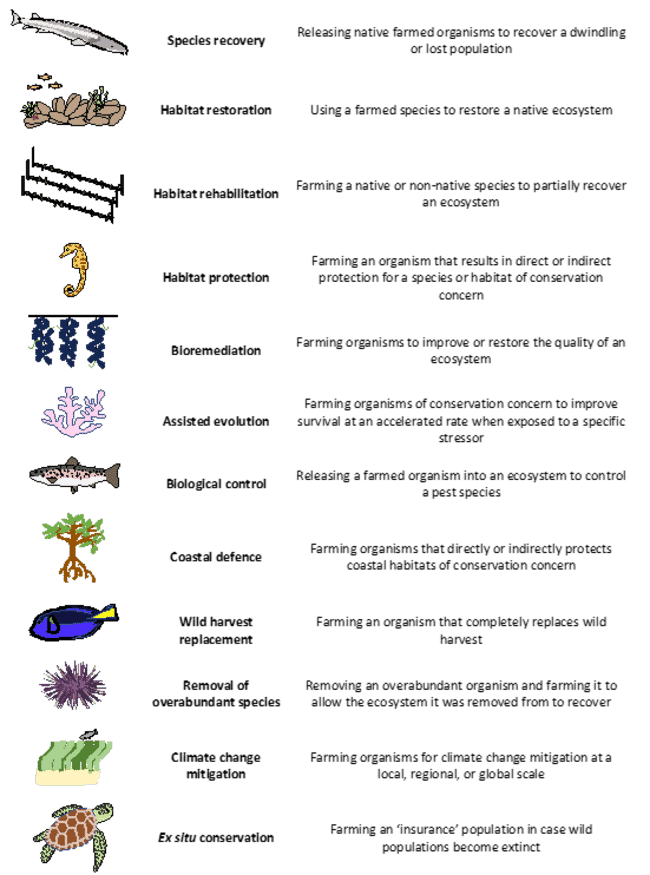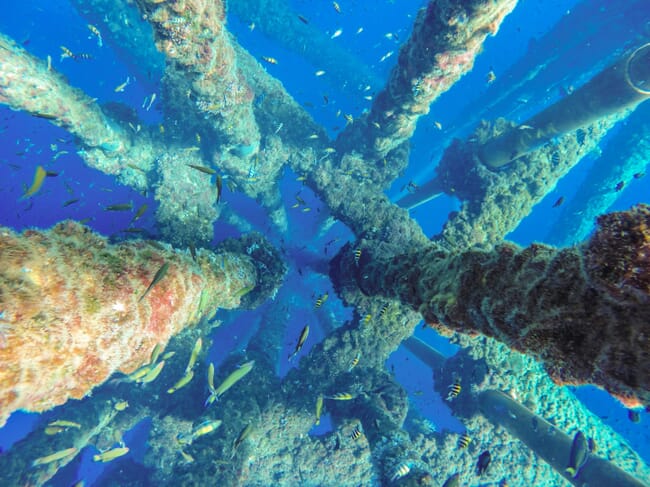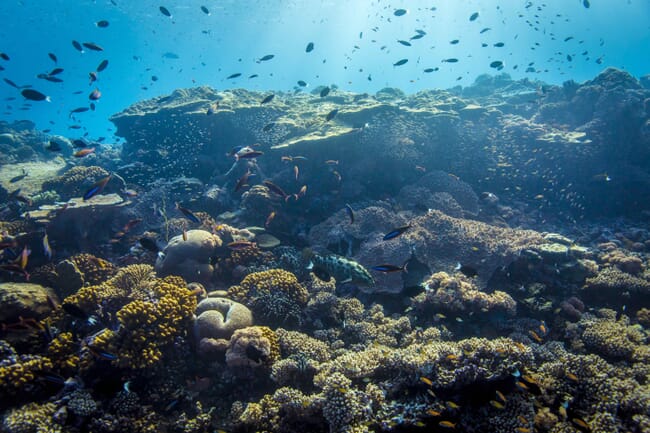
Aquaculture can be leveraged to assist in species recovery, habitat restoration, environmental remediation and coastal defence
Most people around the world live near freshwater or marine ecosystems, and we rely on them as sources of food, tourism, recreation, culture and livelihoods. Yet, our impacts on these ecosystems are degrading important habitats and causing rapid declines in biodiversity.
However, we can use aquaculture as a tool to slow or stop these negative impacts, and help restore ecosystems that have been largely lost over the last century.
Published in Conservation Biology, our new review identifies 12 potential ecological benefits of aquaculture. These include species recovery, habitat restoration, habitat rehabilitation, habitat protection, bioremediation, assisted evolution, biological control, wild harvest replacement, coastal defence, removal of overabundant species, climate change mitigation and ex situ conservation.
The potential environmental benefits of aquaculture have been under the radar for many years. While the negative impacts of some types of aquaculture are well known, we searched for smart ways it can be used to support conservation and restoration of species and ecosystems, finding 12 in total.

Some types of industrial fish production benefit the environment by farming food in a specific way or place (modified from Overton et al. 2023)
Commercial aquaculture providing ecological benefits
In 2020, 122.6 million tonnes of fish, shrimp, shellfish and seaweed were produced via aquaculture for food. Some of this industrial production benefits the environment by farming food in a specific way or place.
Seaweed and shellfish farmed in coastal waters provide bioremediation benefits by removing excess nutrients from urban or agricultural runoff. This can reduce the likelihood of toxic algal blooms that can kill fish and other native organisms.
Aquaculture farms themselves can also be important habitats for wild fish. The gear used for oyster farming attracts and supports a range of wild fish species, with ropes and baskets full of oysters playing a similar role to natural rocky reefs by providing food and shelter for wild fish in places where natural reefs have been degraded. This form of habitat rehabilitation, where a native or non-native commercial aquaculture species can improve the function of a degraded ecosystem, can function as an analogue of an ecosystem that has been degraded or previously lost.
Commercial aquaculture can also directly or indirectly protect a species, or the structure, function, or both of an existing habitat. Fishery exclusion zones (including trawling) around commercial farms can partially function like marine protected areas, which protect fishes and other marine species that aggregate or live in and around the site.

Commercial aquaculture can directly or indirectly protect a species by providing structures where fish can aggregate © Cess Con
Aquaculture techniques applied in conservation and restoration
Beyond food production, there are a range of new ways that conservationists are tapping into aquaculture techniques to restore or conserve species and habitats. The world’s largest conservation organisation, The Nature Conservancy (TNC), has pioneered the use of aquaculture to restore lost marine ecosystems.
Aquaculture is a key part of The Nature Conservancy’s process to rebuild lost shellfish reefs through creating healthy oyster and mussel juveniles to kick start reef restoration. Reefs with abundant shellfish create strong ecological benefits, and provide a range of ecosystem services, including functioning as important habitats and improving water quality in coastal areas. Without aquaculture, restoring reefs for some species would be challenging, due to the lack of wild individuals available for translocation.
Aquaculture is used to help restore vulnerable or endangered fish populations around the world, by “restocking” cultured farmed fish back into their habitats. Species recovery programmes include white sturgeon in North America, golden mahseer in India and Macquarie perch in Australia, with the aim of trying to bring back wild populations and to protect these species from becoming extinct.
Aquaculture can also be used to replace wild harvesting of threatened species. Over 90 percent of freshwater aquarium species are now farmed, allowing aquarists to stock their home aquaria without contributing to overfishing of vulnerable wild populations. But many species in marine aquaria, like clownfish and corals, are still collected from the wild for the aquarium trade. Researchers around the world are developing methods to farm these species too, and ease some of the pressure on wild populations.
Scientists around the world also use aquaculture techniques to farm corals for coral reef restoration. Coral species are being bred in captivity to improve their survival in warmer waters, and then stocked back into the wild, in attempts to speed up adaptation to climate change. While traditionally not thought of as aquaculture, this assisted evolution strategy is made possible by aquaculture expertise.

Researchers are using assisted evolution strategies to breed coral species in captivity and releasing them in the wild © George Duffield
Using measurable indicators of success
We emphasise the importance of using measurable indicators of success when claiming that a particular aquaculture activity is ecologically beneficial. By requiring a high standard of evidence, this reduces the potential for greenwashing. We want to ensure that aquaculture practitioners monitor their ecological impact before claiming their farm creates ecological benefits.
Importantly, while a particular aquaculture activity may achieve one of these 12 outcomes, it does not necessarily mean that the activity will deliver an overall benefit to the environment. It is therefore important to determine the net impact of an aquaculture activity when deciding if it is ecologically beneficial.
As aquaculture expands in freshwaters and the ocean, we have an opportunity to avoid the mistakes we have made farming on land, which have led to habitat and biodiversity loss. We can instead strategically farm species in areas and in ways that support rather than degrade ecosystems. We challenge people to reimagine what aquaculture is and what it can do, and to show people how it can be used as a tool to safeguard aquatic ecosystems and biodiversity for future generations.




